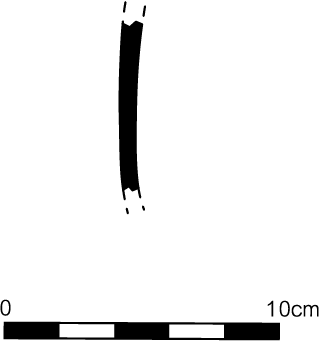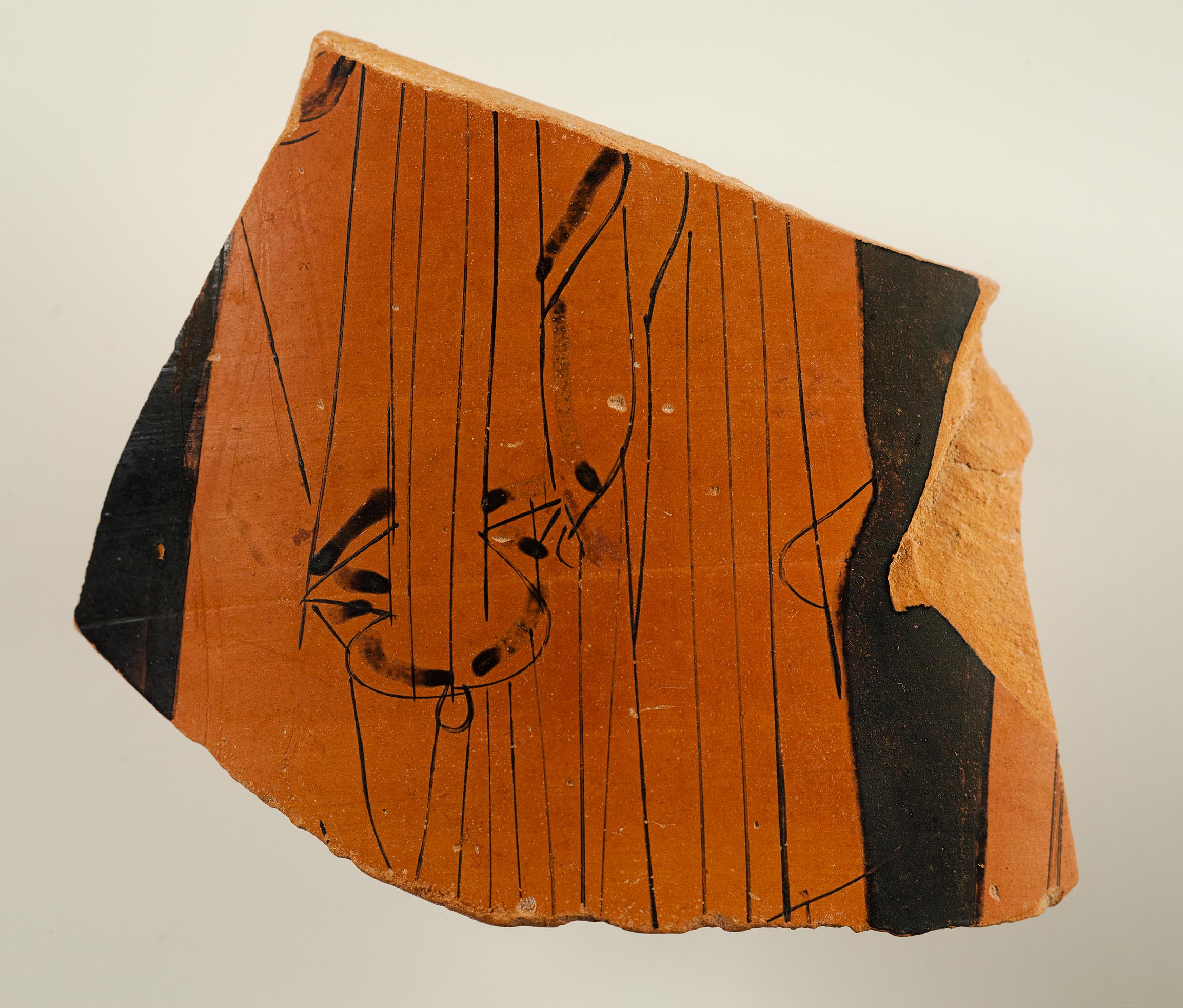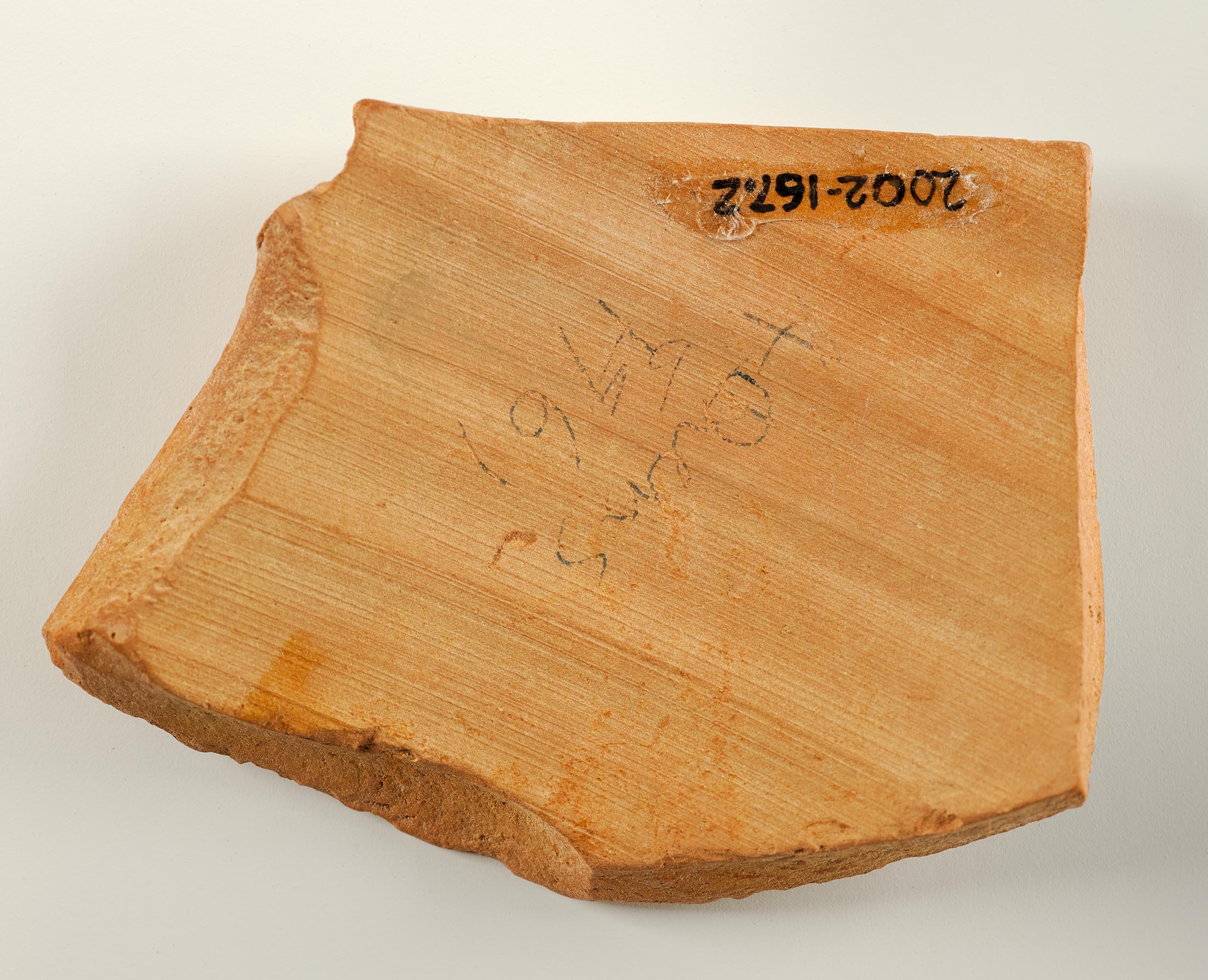Provenance
By the late 1950s or early 1960s, Cornelius C. Vermeule III and Emily T. Vermeule (Cambridge, MA); 2002, gift, Cornelius C. Vermeule III and Emily T. Vermeule to Princeton University. Possibly from the Sanctuary of the Nymphe on the south slope of the Acropolis (see Princeton 2002-167.1 [Entry 6]).
Shape and Ornament
Single fragment from the neck. Interior reserved. No ornament preserved.

Subject
Woman. The fragment preserves a portion of the draped body of a woman wearing a himation with a black hem and a small drop weight. A small section of what is probably the drapery of another woman is preserved at the right.
Attribution and Date
Unattributed. Circa 440–420 BCE.
Dimensions and Condition
7.3 × 6.4 cm; est. diam. 7.3 cm; thickness 0.8 cm. Broken on all sides. Minor chips on surface, in particular around the edge of the break at the right.
Technical Features
Relief contours for short sections of the drapery.
Bibliography
Abbreviation: Princeton RecordRecord of the Princeton University Art Museum. (1942– ). 62 (2003): 151 [not illus.].
Comparanda
The narrow diameter suggests that the fragment comes from the neck of a loutrophoros. For a full discussion of loutrophoroi, see Princeton 2002.167.1 (Entry 6). They were primarily made in the second half of the fifth century, when they became increasingly elongated. Princeton’s fragment, to judge from its diameter and the size of the draped body, should be placed in this period.
The necks of loutrophoroi with nuptial iconography often display multiple women; on the amphora type, these are most commonly single women divided between obverse and reverse, while necks of the hydria type may have women standing next to one another. Due to the narrow diameter of the neck, the number of women on the hydria type typically remains two, crowded together on the front of the neck, with the space around the single vertical strap handle left undecorated. If, as seems likely, the reserved section to the right of the draped body on the Princeton fragment preserves the remains of a second woman, its decorative scheme would align with the hydria type of loutrophoros, with two women in close proximity: cf. Athens 12540 (Abbreviation: ARV2J. D. Beazley. Attic Red-Figure Vase-Painters. 2nd ed. Oxford, 1963 1256.11; R. M. Mösch-Klingele, Die Loutrophóros im Hochzeits- und Begräbnisritual des 5. Jahrhunderts v. Chr. in Athen (Bern, 2006), figs. 18a–b, 19a; Abbreviation: BAPDBeazley Archive Pottery Database. http://www.beazley.ox.ac.uk 217053). Vase-painters who decorated loutrophoroi seem to have painted both versions of the shape, with no clear preference for one or the other. Kokula has suggested that the hydria type of loutrophoros was dedicated by women, while the amphora type was dedicated by men: G. Kokula, Marmorlutrophoren (Berlin, 1984), 116–17.

